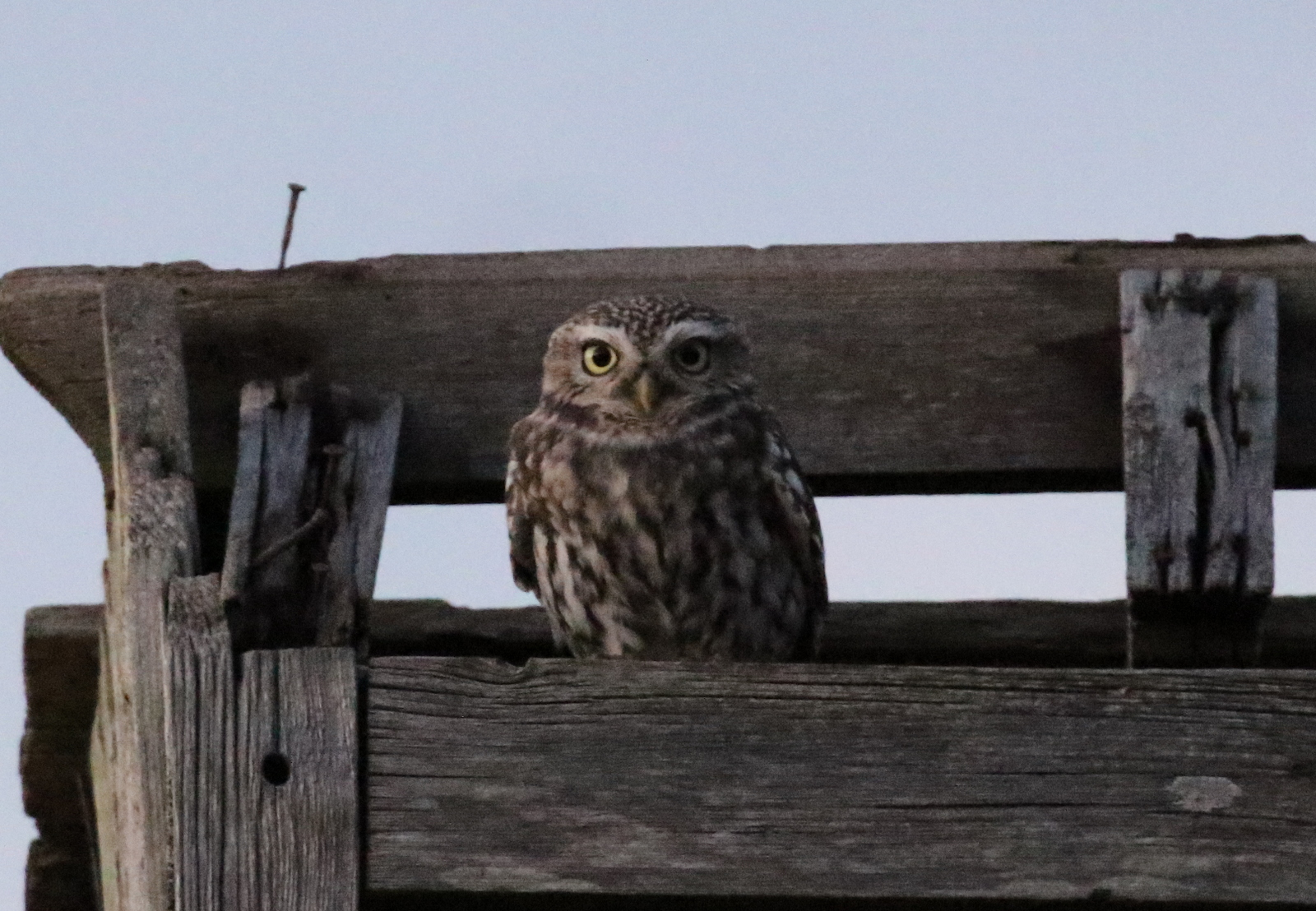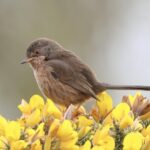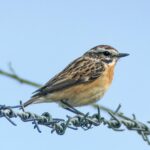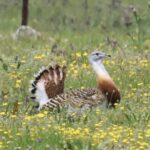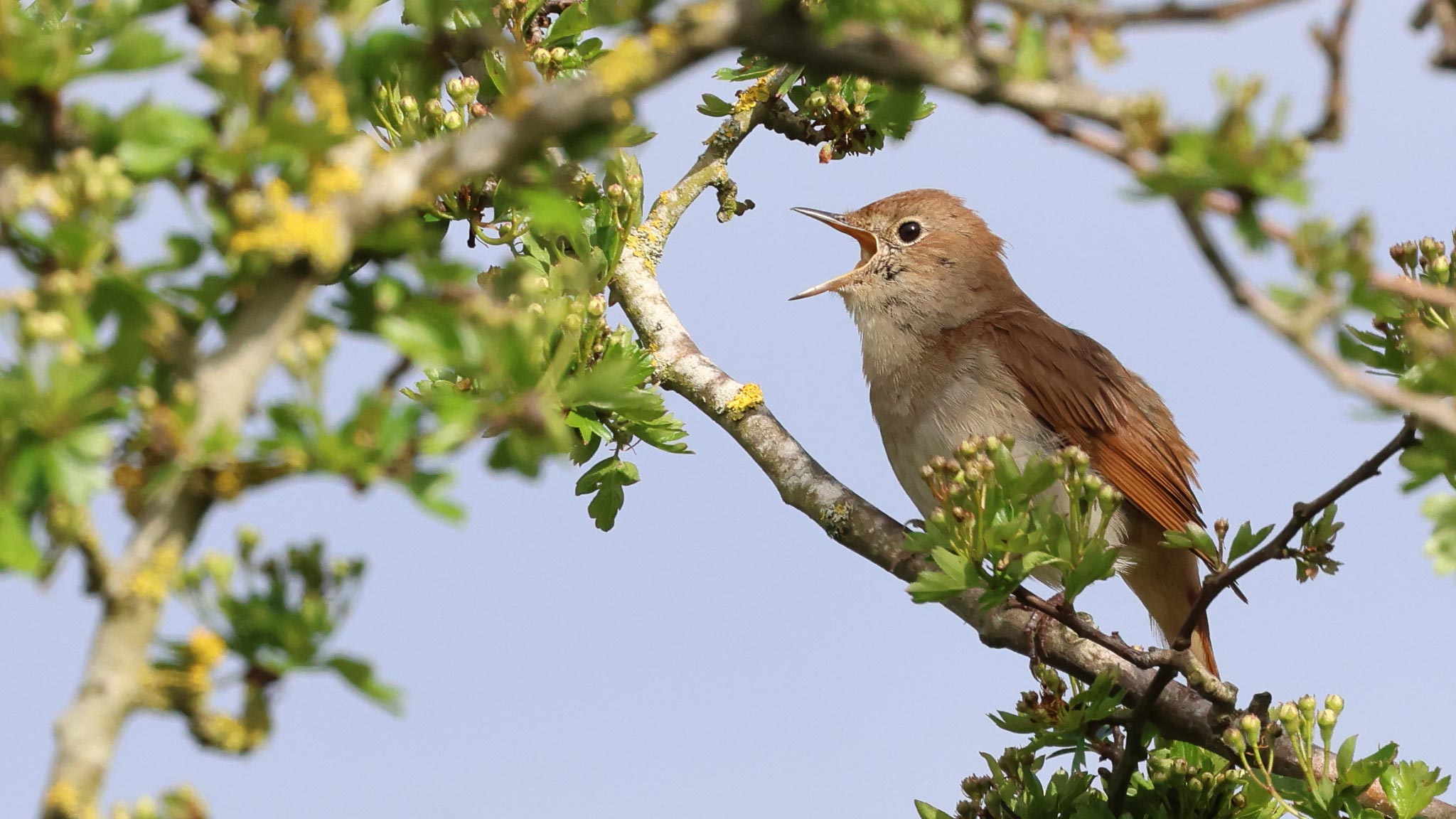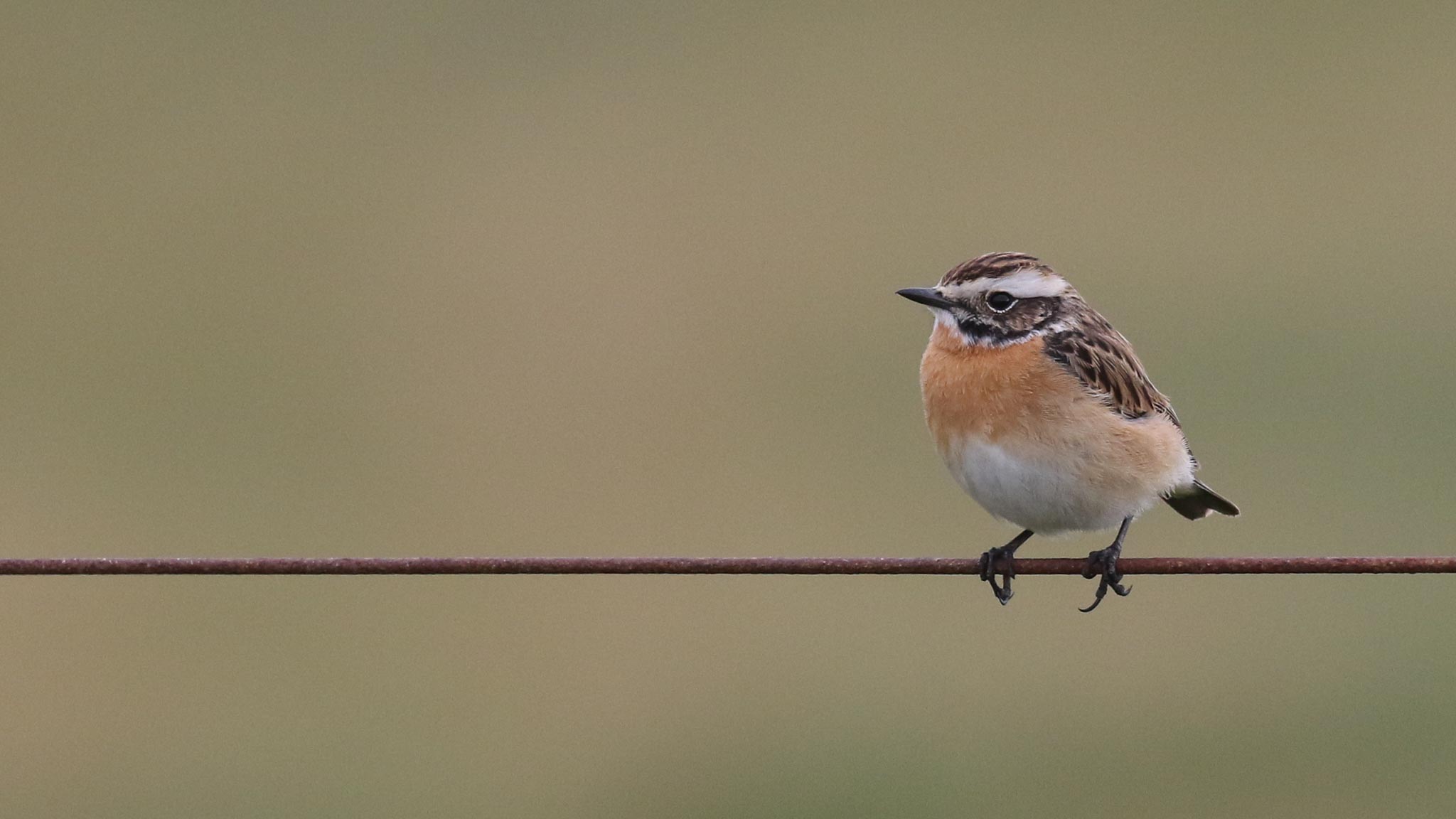Day 2 of a weekend of Autumn Tours today. It was much better weather today – mostly bright, even sunny at times, though with one or two squally showers we mostly managed to miss and cold in the still blustery NE wind.
With the wind coming in off the continent overnight, we headed down to Wells Woods first, so see what it might have brought us. As we passed the boating lake, we could see several Little Grebes out on the water and one seemed to be laughing at us (their call sounds like mad laughter!).
Armed with a tip off about a vocal Yellow-browed Warbler a short distance along the track, we went to look for it. As we walked along, we could hear the teezing calls of Redwings and the chucking of Blackbirds in the bushes. A large flock of Redpolls, 40-50 strong, flew out of the birches by the boating lake and circled overhead. We could hear the Yellow-browed Warbler calling from deep in a large sallow clump as we approached, but it was immediately clear it would be a devil to see here.
Walking into the trees, round the back of the sallows, we flushed tons of Blackbirds and Redwings – there had clearly been a sizeable arrival of them overnight, birds arriving from the continent for the winter. There were Redpolls in the trees here too, and we watched several rich brown-toned Lesser Redpolls as they dropped out of the birches and into a large hawthorn in front of us.
Round by the Dell, we could hear tits calling in the trees – Blue, Great and Coal Tits, but surprisingly no Long-tailed Tits with them. There were Goldcrests everywhere here, flicking about in the trees, low down in the briars, in every bush. There had clearly been a big arrival of Goldcrests too – amazing to think that these tiny birds, weighing about the same as a 20p piece, can make it all the way across the North Sea.
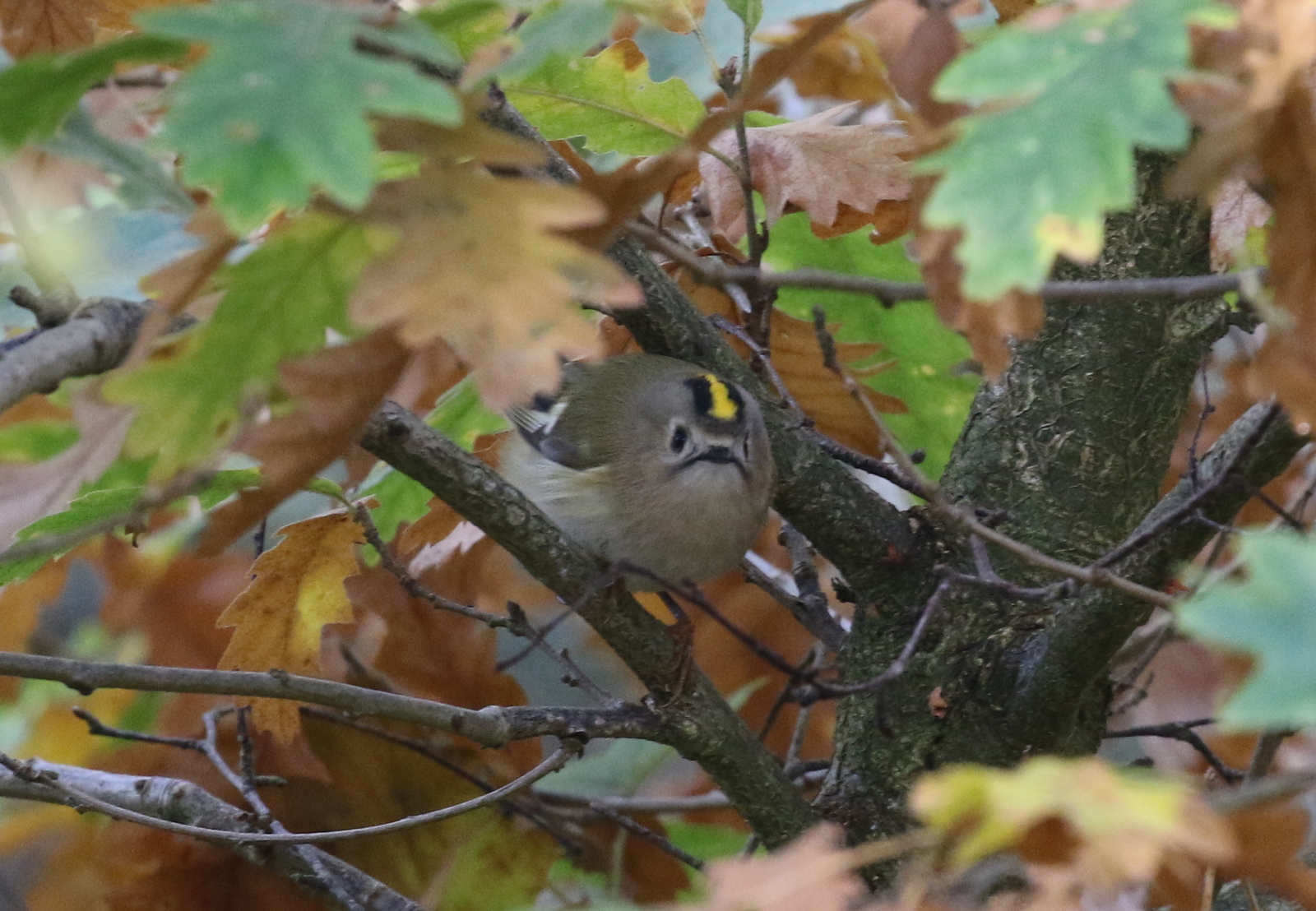
There is a more open area, with lots of hawthorns, which is normally good for thrushes when they have just come in, but it was disappointingly quiet today. With the bright weather, there were lots of people out walking in the woods this morning and lots of dogs running round, so perhaps they had all been flushed from here already.
Making our way back into the birches, we managed to locate a second Yellow-browed Warbler, even though it wasn’t calling. This time we got a good look at it, flitting around in the branches of the trees. We could see its striking pale supercilium and two pale wing bars.

Yellow-browed Warblers are very much an expected feature of autumn in here these days, but amazing to think these small birds make it all the way here from their breeding groups over towards the Urals, on their way south for the winter. There were a couple of Chiffchaffs in the trees here too.
Continuing on towards the drinking pool, the trees by the path here were also full of Goldcrests. But the bushes round the drinking pool itself were quiet. While we walked through, we did hear a Crossbill calling and looked up to see a nice red male flying over the tops of the pines, disappearing off east. Having only had brief views of them earlier, we decided to head back and see if we could get a better look at the Redpolls next. Several Siskins flew back and forth overhead calling on the way.
Approaching the Dell meadow, someone waved to call us over and told us that a Barn Owl had been hunting over the grass. We stood for a minute and looked, but there was no sign of it now. However, we did see a couple of people walk out of the trees at the far side, and stop to look up into the birches above them. We could see they were looking at a small group of Redpolls, so we walked over to join them.
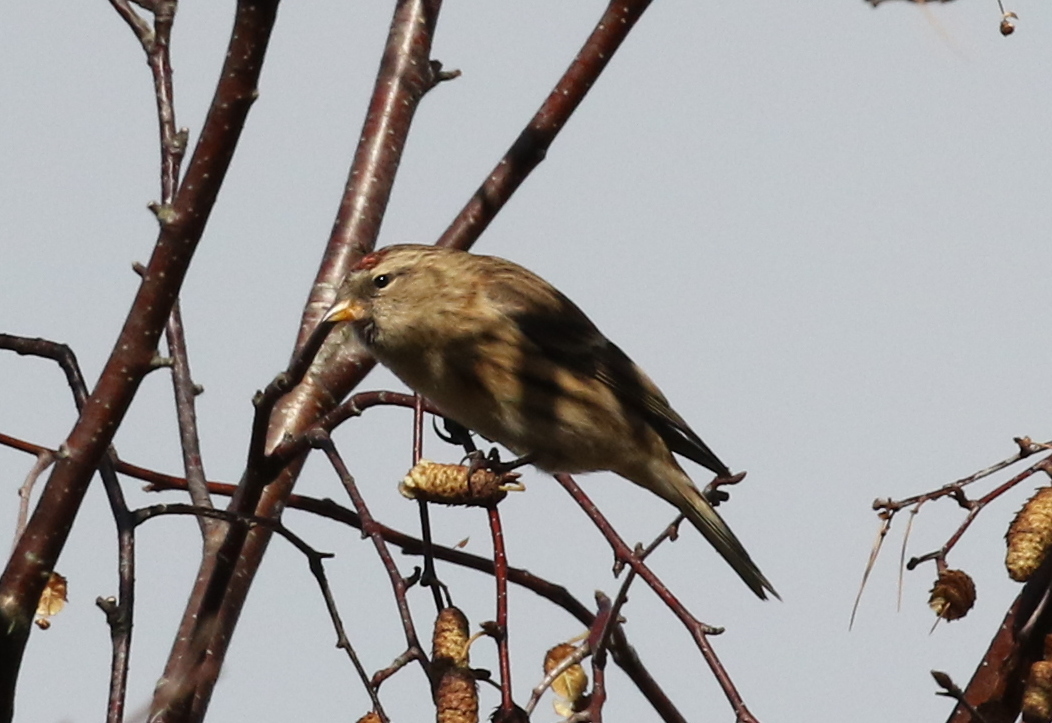
The five or six Redpolls closest to us, lower down in the front of the birch, were obvious Lesser Redpolls. They are smaller and darker, more richly coloured, tawny brown on the back with a brighter brown wash on the breast. The three Redpolls higher up were larger and paler. They were mostly facing us and we assumed at first they were all Mealy Redpolls, migrants from further north in Scandinavia.
One of the paler Redpolls was lurking deeper in the branches, so we concentrated on looking at the others first. Then the third bird turned and we could see it looked rather pale frosty above, buff and white-toned on the back rather than grey-brown. It also appeared to have a rather bright white wingbar too.
It climbed higher up and came out where we could get a better look at it. It was face on to us again, but it did look very pale, with more limited streaking on the flanks than the neighbouring Mealy Redpoll and with a pale creamy, chamois wash on the face and breast. It found a catkin to feed on and hung on it above us – we could see the white feathers underneath looked thick and densely padded and it had just a single, narrow dark streak in the middle of its undertail coverts.
Surely it was an Arctic Redpoll? We trained the scope on it, hoping it would turn and we might see the diagnostic white rump. It fed for a minute or two, hanging on the catkin, but then something spooked it and it disappeared into the trees. It looked good, but without seeing the rump, we just didn’t have enough to be 100% sure.
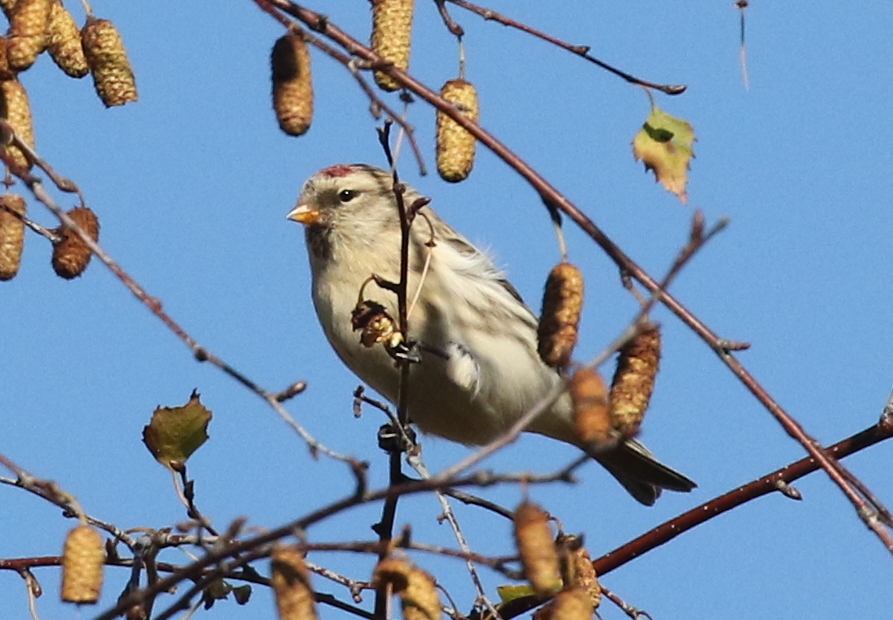
We waited a while to see if the Redpolls would return to the birches where they had been feeding. We were rewarded with the Barn Owl, which reappeared, and started quartering the meadow in front of us. Great views in the sunshine! It landed in one of the trees for a few minutes, where we could get it in the scope, before resuming the hunt.

The Barn Owl flew back into the trees and landed in an area of sparser birches. It seemed to be looking down into the grass below, looking for prey – an unusual place for a Barn Owl to hunt. Then it disappeared on through the trees.
A couple of Bramblings appeared in the tops of the birches, along with one or two Redwings. Two Lesser Redpolls chased through the trees and appeared to go down to drink, but there was no sign of any more Redpolls coming back to feed on the edge. We could still hear them feeding in the tops of the denser birches beyond, but apart from seeing the odd one or two at any time, they were impossible to get a good look at in here.
Postscript – it felt like that would be the end of the story, as we decided to move on. However, on Monday morning, after several hours chasing round after the Redpoll flock, we were able to confirm that there was indeed at least one Coues’s Arctic Redpoll in with them. A nice post-tour confirmation and a great late addition to the day’s list!
As we walked back to the car, the Barn Owl was still hunting, flying around between the trees where the wood is a bit more open. A pair of Bullfinches also perched up briefly in the hawthorns, piping to each other plaintively, before disappearing in.
From Wells, we headed west to Holme. As we got out of the car by the golf course, we could hear Redwings, Song Thrushes and Blackbirds calling in the trees. A Fieldfare tchacked noisily too and a steady stream of small flocks of Starlings flew overhead, on their way west. All fresh arrivals from the continent, coming in for the winter.
As we walked out over the golf course, it was very busy – lots of people, and lots of dogs, out enjoying the morning sunshine. We were hoping to find a small group of Shorelarks, which has been feeding on the beach here, but with so much disturbance, it didn’t look promising.
When we got up to the top of the beach, we stopped to scan the sea. A Great Crested Grebe was out on the water and a winter-plumage Red-throated Diver was diving as it made its way east just off the beach. There were lots of waders on the wet sand – Bar-tailed Godwits, Knot, Sanderling, Grey Plover and Turnstones. Two Ringed Plovers flew past.
There were some threatening dark clouds just offshore, although they looked like they might miss us. Just in case, we thought we should have a quick look for the Shorelarks now. As they had apparently been feeding that way yesterday, we set off east along the high tideline. As we walked past, several Rock Pipits and Skylarks came up from the saltmarsh just behind the beach. It started to spit with rain briefly, which at least had the advantage of encouraging most of the other people to head back in for cover!
We hadn’t gone too far before we found the Shorelarks, feeding on the top of the beach some distance ahead of us. They were heading away, but we stopped and had a quick look at them through the scope. We were planning to try to walk up a little closer, but before we had a chance they took off and flew towards us. They came right over us, calling softly, and landed on the beach back where we had just been. There were six of them – an extra two, as only four had been reported earlier.
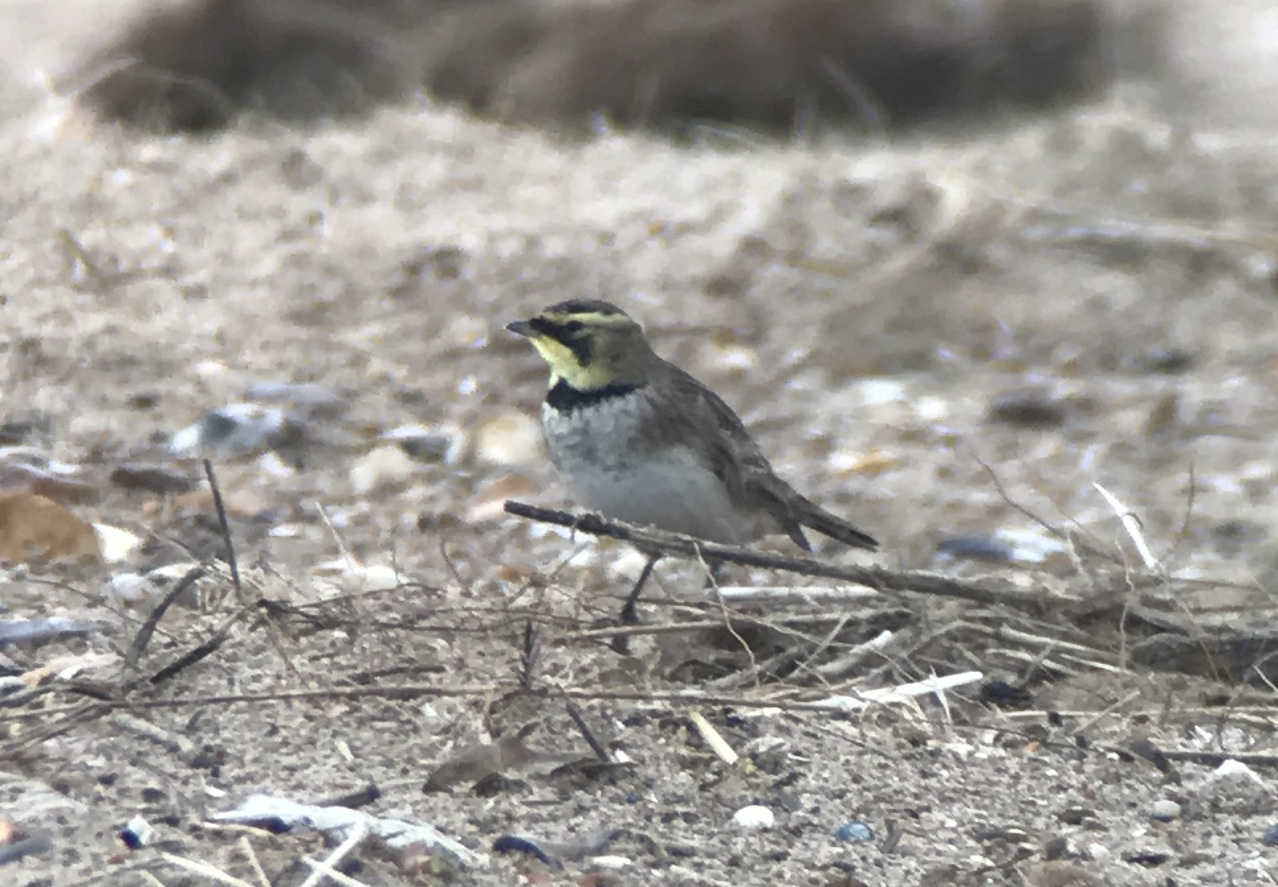
We walked back and found the Shorelarks feeding on the tideline in a sandy slack in the dunes. We got them in the scope, and had some good views. We could see their yellow faces and black bandit masks and collars. A walker came along the shoreline and flushed them, but the Shorelarks flew towards us and landed even closer, even better views. They fed here for a few minutes and they were off again. flying off along the beach behind us.
It was time for lunch, so we headed round to Titchwell and made use of the picnic tables, out of the wind. Afterwards, we headed out to explore the reserve. The feeders by the visitor centre held just a few Chaffinches and Goldfinches, but we could hear Bramblings calling in the alders by the main path. We looked up to see two Bramblings feeding above us. There was a tit flock working its way through the trees here too, but we couldn’t find anything different in with the tits.
The dried-up Thornham grazing marsh ‘pool’ was fairly devoid of life – just a single Redshank and a Pheasant. The reedbed pool held just a few Coots and Mallards today, so we continued quickly on to Island Hide. Just before we got to the access ramp, we looked down at the mud in the corner below the path and noticed a Grey Wagtail feeding on the edge of the water. They are not common here, so this was presumably a migrant stopping off on its way.
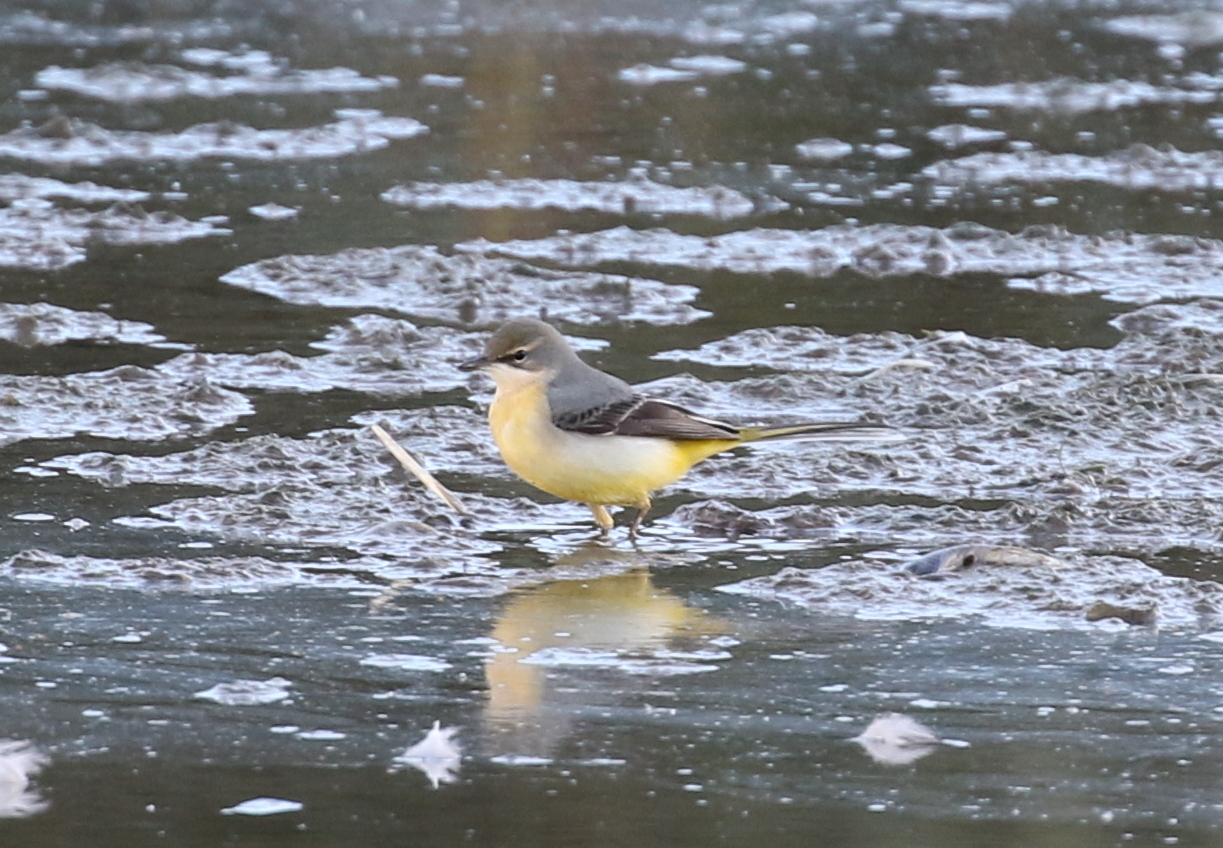
From the shelter of Island Hide, we stopped to scan the Freshmarsh. A winter adult Ruff was feeding on the mud just outside the hide, next to an adult Dunlin still moulting out of breeding plumage, still sporting a rather spotty black belly patch. There were more Dunlin and Ruff on the islands further back.

There were still five Avocets on here today. A small number normally try to stay through the winter, while most of the other decide to head south instead. There were a few Black-tailed Godwits too, mostly asleep on the islands. Two Golden Plover were tucked in on the edge of the vegetation but were spooked when all the ducks took off and flew off.
There are plenty of ducks on here now, mostly Wigeon and Teal, as more return from their northern breeding grounds . More of the drake Teal are emerging from eclipse now and regaining their smart breeding plumage. The drake Wigeon on average are a little behind them. The Brent Geese are returning too, as we saw yesterday, and small groups kept dropping in to the Freshmarsh to drink or bathe, from the saltmarsh beyond.

A sharp call alerted to an incoming pipit, but we were in the other part of the hide so didn’t see it come in. We eventually found it, feeding along the edge of the reeds to the side of the hide. Normally we might expect it to be a Water Pipit on here, but this was a Rock Pipit, rather oily brown above and heavily streaked and blotched below. A Water Rail put in a brief appearance next to it, but quickly disappeared back into the reeds. A Marsh Harrier circled over the reedbed.
The wind picked up as a squally shower came in off the sea. It mostly missed us, passing inland to the west, but it did rain for a few minutes. We sat it out in the hide. Once it had cleared through, we decided to head round towards Parrinder Hide for a change of scene, but once we got up onto the main path the wind had dropped a bit too and it looked OK ahead of us, so we continued straight out towards the beach.
As we walked past Volunteer Marsh, a couple of close Black-tailed Godwits were feeding in the channel just below the bank. There were more Redshanks on the mud in the wider channel at the far end, along with a single Grey Plover which we got in the scope.
When we got to the beach, the tide was out but we stopped on the edge of the dunes to scan the sea. We could see a line of Common Scoter flying way out in front of the wind turbines and a couple of juvenile Gannets making their way past, but otherwise the sea was quite choppy and we couldn’t see much out on the water.
There were lots of waders out on the mussel beds – mostly Oystercatchers, Curlew and godwits. A Marsh Harrier drifted along the shoreline and over the mussel beds, causing pandemonium and flushing waders. Even though the wind had dropped a bit, it was still breezy and cold out here, so we decided to head back to shelter.
We stopped in at Parrinder Hide. With the clocks having gone back last night, it was getting dark early today and the gulls were already gathering to roost. We had a good look through them, to see if anything different had come in, but all we could see were the usual Black-headed, Common, Lesser Black-backed, Herring and Great Black-backed Gulls.
A couple of geese walked across in front of the hide – a single Pink-footed Goose following a lone Greylag, giving a nice comparison. The Pink-footed Goose was one of the two injured birds, with a mangled wing, which has been here all year, though there was no sign of the second today. A flock of Golden Plovers, circled over calling and dropped down onto the mud amongst the ducks.
It was time to start heading back now. As we walked back along the path, a Cetti’s Warbler was practicing its song from the bushes in the reedbed, nice to hear them back as the population here was devastated by the cold weather earlier in the year. We had seen small flock of Starlings flying west all day, but now a huge flock of at least 1,000 birds came over and disappeared on west.
As we got back to the trees, there seemed to be a burst of activity as Blackbirds and thrushes started spiralling up out of the trees. They circled overhead, seemingly getting their bearings, before heading off into the gathering gloom. Having rested up here for the day, they were now looking to continue on their journey. An amazing thing to watch.
As we made our way back, there was one last surprise in store. A shape on the roof of a barn, silhouetted against the last of the light, caught our eye. A quick U-turn confirmed it was a Little Owl. We stopped and wound down the windows. It dropped into a roof vent but stayed perched half in where we could see it watching us. A lovely end to the day and en exciting Autumn weekend.
